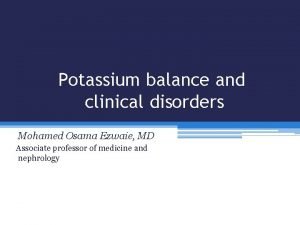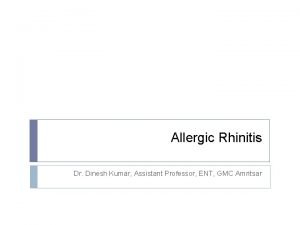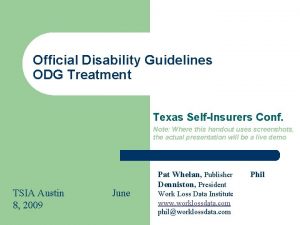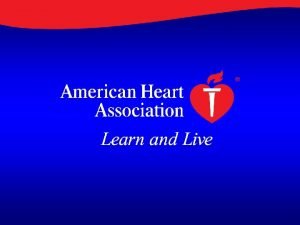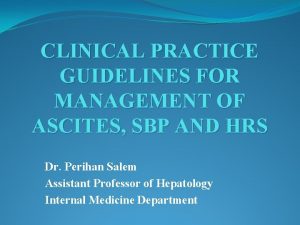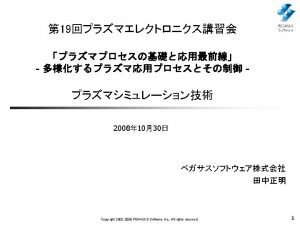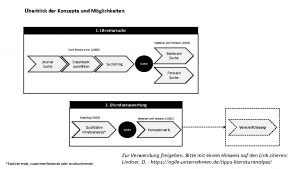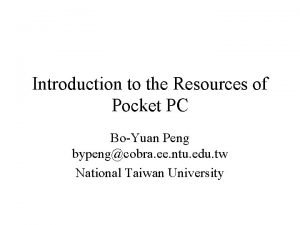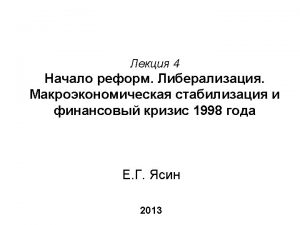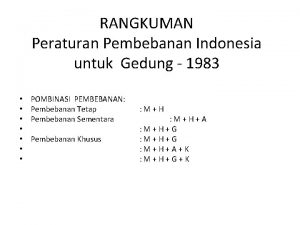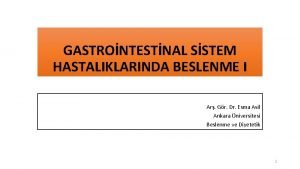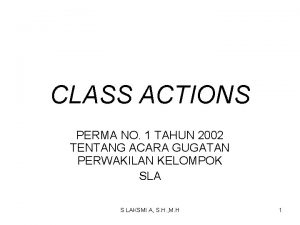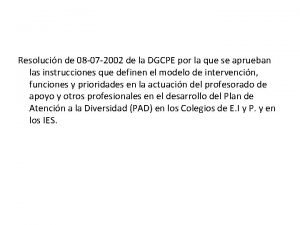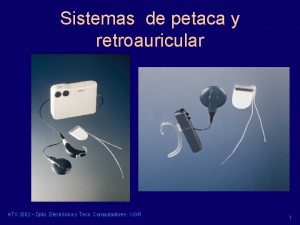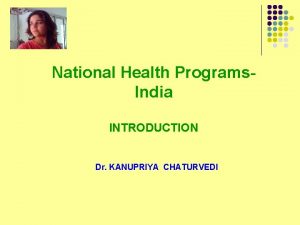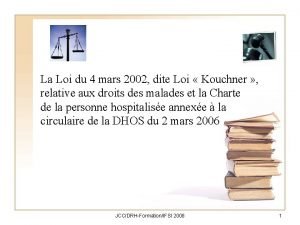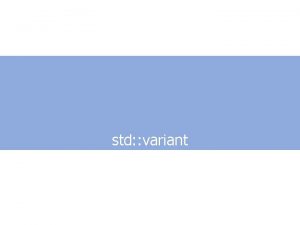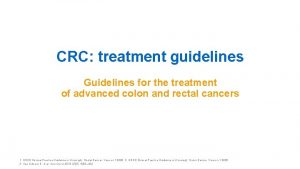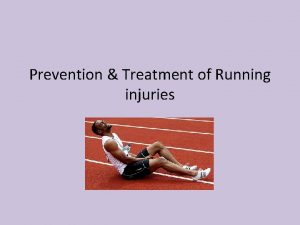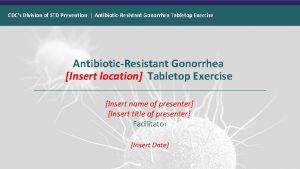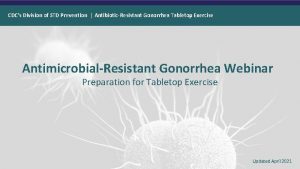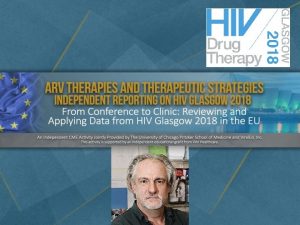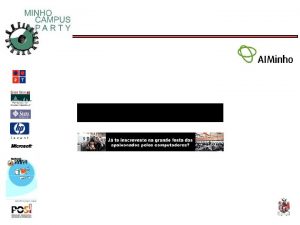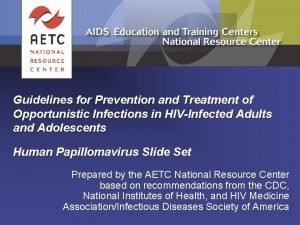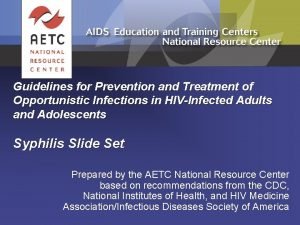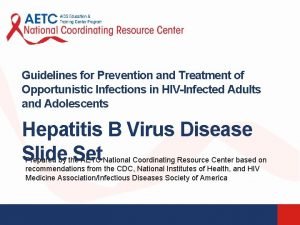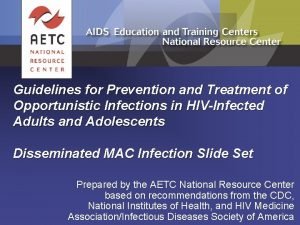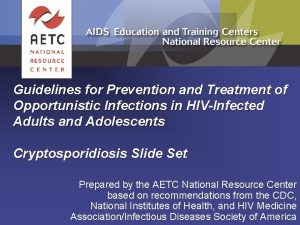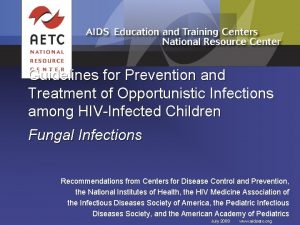2002 STD Treatment Guidelines Division of STD Prevention
















































- Slides: 48

2002 STD Treatment Guidelines Division of STD Prevention, CDC

2002 STD Treatment Guidelines • Evidence-based systematic review • Consultants Meeting in September 2000 • 65 invited consultants- STD treatment experts, professional organizations, HMOs • Background manuscripts in Clinical Infectious Diseases (October 2002)

STD Prevention and Control • Education and counseling to reduce risk of STD acquisition • Detection of asymptomatic and/or symptomatic persons unlikely to seek evaluation • Effective diagnosis and treatment • Evaluation, treatment, and counseling of sexual partners • Preexposure vaccination--hepatitis A, B

Prevention Messages • Prevention messages tailored to the client’s personal risk; interactive counseling approaches are effective • Despite adolescents greater risk of STDs, providers often fail to inquire about sexual behavior, assess risk, counsel about risk reduction, screen for asx infection • Specific actions necessary to avoid acquisition or transmission of STDs • Clients seeking evaluation or treatment for STDs should be informed which specific tests will be performed

Prevention Methods Male Condoms • Consistent/correct use of latex condoms are effective in preventing sexual transmission of HIV infection and can reduce risk of other STDs • Likely to be more effective in prevention of infections transmitted by fluids from mucosal surfaces (GC, CT, trichomonas, HIV) than those transmitted by skin-skin contact (HSV, HPV, syphilis, chancroid)

Prevention Methods Spermicides • N-9 vaginal spermicides are not effective in preventing CT, GC, or HIV infection • Frequent use of spermicides/N-9 have been associated with genital lesions • Spermicides alone are not recommended for STD/HIV prevention • N-9 should not be used a microbicide or lubricant during anal intercourse

Genital Ulcer Evaluation • Diagnosis based on medical history and physical examination often inaccurate • Serologic test for syphilis • Culture/antigen test for herpes simplex • Haemophilus ducreyi culture in settings where chancroid is prevalent • Biopsy may be useful

Genital Herpes First Clinical Episode Acyclovir 400 mg tid or Famciclovir 250 mg tid or Valacyclovir 1000 mg bid Duration of Therapy 7 -10 days

Genital Herpes Episodic Therapy Acyclovir 400 mg three times daily x 5 days or Acyclovir 800 mg twice daily x 5 days or Famciclovir 125 mg twice daily x 5 days or Valacyclovir 500 mg twice daily x 3 -5 days or Valacyclovir 1 gm orally daily x 5 days

Genital Herpes Daily Suppression Acyclovir 400 mg bid or Famciclovir 250 mg bid or Valacyclovir 500 -1000 mg daily

Genital Herpes Counseling • Natural history of infection, recurrences, asymptomatic shedding, transmission risk • Individualize use of episodic or suppressive therapy • Abstain from sexual activity when lesions or prodromal symptoms present • Risk of neonatal infection

Syphilis Primary, Secondary, Early Latent Recommended regimen Benzathine Penicillin G, 2. 4 million units IM Penicillin Allergy* Doxycycline 100 mg twice daily x 14 days or Ceftriaxone 1 gm IM/IV daily x 8 -10 days (limited studies) or Azithromycin 2 gm single oral dose (preliminary data) *Use in HIV-infection has not been studied

Primary/Secondary Syphilis Response to Treatment • No definitive criteria for cure or failure are established • Re-examine clinically and serologically at 6 and 12 months • Consider treatment failure if signs/symptoms persist or sustained 4 x increase in nontreponemal test • Treatment failure: HIV test, CSF analysis; administer benzathine pcn weekly x 3 wks • Additional therapy not warranted in instances when titers don’t decline despite nl CSF and repeat therapy

Syphilis Latent Syphilis Recommended regimen Benzathine penicillin G 2. 4 million units IM at one week intervals x 3 doses Penicillin allergy* Doxycycline 100 mg orally twice daily or Tetracycline 500 mg orally four times daily Duration of therapy 28 days; close clinical and serologic follow-up; data to support alternatives to pcn are limited

Chancroid Azithromycin 1 gm orally or Ceftriaxone 250 mg IM in a single dose or Ciprofloxacin 500 mg twice daily x 3 days or Erythromycin base 500 mg tid x 7 days

Chancroid Management Considerations • Re-examination 3 -7 days after treatment • Time required for complete healing related to ulcer size • Lack of improvement: incorrect diagnosis, co -infection, non-compliance, antimicrobial resistance • Resolution of lymphadenopathy may require drainage

Chancroid Management of Sex Partners Examine and treat partner whether symptomatic or not if partner contact < 10 days prior to onset

Urethritis • Mucopurulent or purulent discharge • Gram stain of urethral secretions > 5 WBC per oil immersion field • Positive leukocyte esterase on first void urine or >10 WBC per high power field Empiric treatment in those with high risk who are unlikely to return

Nongonococcal Urethritis Azithromycin 1 gm in a single dose or Doxycycline 100 mg bid x 7 days

Nongonococcal Urethritis Alternative regimens Erythromycin base 500 mg qid for 7 days or Erythromycin ethylsuccinate 800 mg qid for 7 days or Ofloxacin 300 mg twice daily for 7 days or Levofloxacin 500 mg daily for 7 days

Recurrent/Persistent Urethritis • Objective signs of urethritis • Re-treat with initial regimen if non-compliant or re-exposure occurs • Intraurethral culture for trichomonas • Effective regimens not identified in those with persistent symptoms without signs

Recurrent/Persistent Urethritis Metronidazole 2 gm single dose PLUS Erythromycin base 500 mg qid x 7 d or Erythromycin ethylsuccinate 800 mg qid x 7 d

Chlamydia trachomatis • Annual screening of sexually active women < 25 yrs • Annual screening of sexually active women > 25 yrs with risk factors • Sexual risk assessment may indicate more frequent screening for some women • Rescreen women 3 -4 months after treatment due to high prevalence of repeat infection


Chlamydia trachomatis Azithromycin 1 gm single dose or Doxycycline 100 mg bid x 7 d

Chlamydia trachomatis Alternative regimens Erythromycin base 500 mg qid for 7 days or Erythromycin ethylsuccinate 800 mg qid for 7 days or Ofloxacin 300 mg twice daily for 7 days or Levofloxacin 500 mg for 7 days

Neisseria gonorrhoeae Cervix, Urethra, Rectum Cefixime 400 mg or Ceftriaxone 125 IM or Ciprofloxacin 500 mg or Ofloxacin 400 mg/Levofloxacin 250 mg PLUS Chlamydial therapy if infection not ruled out

Neisseria gonorrhoeae Cervix, Urethra, Rectum Alternative regimens Spectinomycin 2 grams IM in a single dose or Single dose cephalosporin (cefotaxime 500 mg) or Single dose quinolone (gatifloxacin 400 mg, lomefloxacin 400 mg, norfloxacin 800 mg) PLUS Chlamydial therapy if infection not ruled out

Neisseria gonorrhoeae Pharynx Ceftriaxone 125 IM in a single dose or Ciprofloxacin 500 mg in a single dose PLUS Chlamydial therapy if infection not ruled out

Candida Vaginitis Classification Uncomplicated Complicated Sporadic, infrequent Mild-to-moderate Likely C albicans Non-immunocomprised Recurrent Severe Non-albicans Diabetes, pregnancy, immunosuppression

Candida Vulvovaginitis Intravaginal regimens Butoconazole, clotrimazole, miconazole, nystatin, tioconazole, terconazole Oral regimen Fluconazole 150 mg in a single dose

Vulvovaginal Candidiasis Management of Sex Partners • Treatment not recommended • Treatment of male partners does not reduce frequency of recurrences in the female • Male partners with balanitis may benefit from treatment

Trichomoniasis Recommended regimen Metronidazole 2 gm orally in a single dose Alternative regimen Metronidazole 500 mg twice a day for 7 days Pregnancy Metronidazole 2 gm orally in a single dose

Trichomoniasis Treatment Failure • Re-treat with metronidazole 500 mg twice daily for 7 days • If repeated failure occurs, treat with metronidazole 2 gm single dose for 3 -5 days • If repeated failure, consider metronidazole susceptibility testing through the CDC

Trichomoniasis Management of Sex Partners • Sex partners should be treated • Avoid intercourse until therapy is completed and patient and partner are asymptomatic

Bacterial Vaginosis Metronidazole 500 mg twice daily for 7 days or Metronidazole gel 0. 75%, 5 g intravaginally once daily for 5 days or Clindamycin cream 5%, 5 g intravaginally qhs for 7 days

Bacterial Vaginosis Alternative regimens Metronidazole 2 gm in a single dose or Clindamycin 300 mg twice daily for 7 days or Clindamycin ovules 100 g intravaginally qhs for 3 days

Bacterial Vaginosis Management of Sex Partners Woman’s response to therapy and the likelihood of relapse or recurrence not affected by treatment of sex partner

Pelvic Inflammatory Disease Minimum Diagnostic Criteria Uterine/adnexal tenderness or cervical motion tenderness Additional Diagnostic Criteria Oral temperature >38. 3 C Cervical CT or GC WBCs/saline microscopy Elevated ESR Elevated CRP Cx discharge

Pelvic Inflammatory Disease Definitive Diagnostic Criteria • Endometrial biopsy with histopathologic evidence of endometritis • Transvaginal sonography or MRI showing thick fluid-filled tubes • Laparoscopic abnormalities consistent with PID

Pelvic Inflammatory Disease Hospitalization • Surgical emergencies not excluded • Pregnancy • Clinical failure of oral antimicrobials • Inability to follow or tolerate oral regimen • Severe illness, nausea/vomiting, high fever • Tubo-ovarian abscess

Pelvic Inflammatory Disease Management of Sex Partners • Male sex partners of women with PID should be examined and treated for sexual contact 60 days preceding pt’s onset of symptoms • Sex partners should be treated empirically with regimens effective against CT and GC

Papillomavirus Treatment • Primary goal for treatment of visible warts is the removal of symptomatic warts • Therapy may reduce but probably does not eradicate infectivity • Difficult to determine if treatment reduces transmission –No laboratory marker of infectivity –Variable results utilizing viral DNA

Papillomavirus Patient-applied Podofilox 0. 5% solution or gel or Imiquimod 5% cream (Aldara) Provider-administered Cryotherapy or Podophyllin resin 10 -25% or Trichloroacetic or Bichloroacetic acid 80 -90% or Surgical removal

Vaccine Preventable STDs Hepatitis A • MSM • Illegal drug users • Chronic liver disease, hepatitis B and C infection

Vaccine Preventable STDs Hepatitis B • History of STD, multiple sex partners, sexually active MSM • Illegal drug use • Household members, sex partners of those with chronic hepatitis B • Hemodialysis, occupational blood exposure

Proctitis • Anoscopic examination for HSV, GC, CT, syphilis • Painful perianal or mucosal ulceration on anoscopy- presumptive therapy for HSV • Recommended regimen Cefriaxone 125 mg IM PLUS Doxycycline 100 mg twice daily for 10 days

Pediculosis Pubis • Pruritus or lice or nits on pubic hair • Decontaminate bedding and clothing • Recommended regimens – Permethrin 1% – Lindane 1% shampoo – Pyrethrins with piperonyl butoxide • Re-treatment may be necessary if sx persist • Treatment of sex partners within the last month
 Primary prevention secondary prevention tertiary prevention
Primary prevention secondary prevention tertiary prevention Hypokalemia treatment guidelines
Hypokalemia treatment guidelines Management of allergic rhinitis
Management of allergic rhinitis Official disability guidelines
Official disability guidelines Ich treatment guidelines
Ich treatment guidelines Ppcd ascites
Ppcd ascites Hepatic encephalopathy staging
Hepatic encephalopathy staging Loratadine pregnancy category
Loratadine pregnancy category Dfpc jprs
Dfpc jprs What is synthetic division
What is synthetic division 369 times 2
369 times 2 Syntheic divison
Syntheic divison Hcf method
Hcf method T. trimpe 2006 http://sciencespot.net/
T. trimpe 2006 http://sciencespot.net/ Direito objetivo e subjetivo
Direito objetivo e subjetivo Copyright 2002
Copyright 2002 Copyright 2002
Copyright 2002 Joyce weil y calhoun 2002 modelos de enseñanza
Joyce weil y calhoun 2002 modelos de enseñanza 2012 biologijos valstybinio egzamino atsakymai
2012 biologijos valstybinio egzamino atsakymai Kota miura
Kota miura Visual studio 2002
Visual studio 2002 T. trimpe 2003 http //sciencespot.net/
T. trimpe 2003 http //sciencespot.net/ Kakugu
Kakugu Vom brocke et al 2009
Vom brocke et al 2009 Kotler 2002
Kotler 2002 Pocket pc 2002 emulator
Pocket pc 2002 emulator San antonio flood 2002
San antonio flood 2002 Frazelle 2002
Frazelle 2002 Bonos 2002
Bonos 2002 1993 1994 1995 1996 1997 1998 1999 2000 2001 2002
1993 1994 1995 1996 1997 1998 1999 2000 2001 2002 Peraturan pembebanan indonesia untuk gedung 2002
Peraturan pembebanan indonesia untuk gedung 2002 5 novembre 2002
5 novembre 2002 Nrs 2002 başlangıç taraması
Nrs 2002 başlangıç taraması Une 157001:2002
Une 157001:2002 Spm 2002
Spm 2002 Perma 1 2002
Perma 1 2002 Sknyliv air show disaster in 2002
Sknyliv air show disaster in 2002 Bartholow and anderson 2002
Bartholow and anderson 2002 08/07/2002
08/07/2002 Loi 2002 droit des usagers
Loi 2002 droit des usagers Atv 2002
Atv 2002 Numbers in words and figures
Numbers in words and figures Calendario escolar 2001-2002 sep
Calendario escolar 2001-2002 sep Purpose of discourse analysis
Purpose of discourse analysis Young arthur 2002
Young arthur 2002 Southwest airlines 2002
Southwest airlines 2002 National health policy 2002
National health policy 2002 Hanson 2002
Hanson 2002 Identitovigilance loi 4 mars 2002
Identitovigilance loi 4 mars 2002

